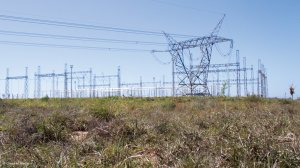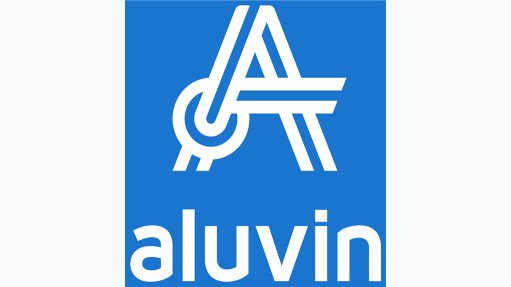Alternative funding models for South Africa’s R235bn grid investment outlined in new report
To unlock the estimated R235-billion in investment required to strengthen and expand the grid in a way that positions it to connect the 53 GW of new generation capacity that will be required by the early 2030s, a new consultation paper has been published making the case for South Africa to consider alternative funding models, including off-balance sheet financing.
Titled ‘Better Finance, Better Grid’, the paper’s lead authors are Professor Mark Swilling and Erica Johnson, of the Centre for Sustainability Transitions (CST) at Stellenbosch University, and it has been published jointly by CST, the Centre for Renewable and Sustainable Energy Studies and the Blended Finance Taskforce, with support from the Open Society Foundation.
Published amid serious transmission infrastructure constraints, particularly in provinces in the south-western regions of the country with potent wind and solar resources, the report also follows on from a call by Electricity Minister Dr Kgosientsho Ramokgopa for grid investment to receive greater investment priority.
Ramokgopa has indicated that the balance sheets of both Eskom and the national fiscus are unlikely to be sufficient to cover the country’s future grid investment needs and has reported that a “healthy” debate is currently under way about possible alternative funding models that seek to mobilise private capital and skills while ensuring that the grid itself remains State-owned.
Eskom’s current Transmission Development Plan states that more than 14 000 km of new power lines need to be constructed in the next ten years.
To meet the target, the utility says 1 500 km of new lines will have to be built yearly to 2032, up from a current yearly tempo of only 300 km. In addition, some 122 600 MVA of new transformation capacity will have to be introduced, representing 77% of Eskom’s current installed base of just over 160 000 MVA.
The utility has indicated that it will be relying more heavily on the engineer, procure and construct, or EPC, contracting model as it seeks to accelerate the pace at which transmission infrastructure is built and has indicated that any other delivery and funding model would require a policy intervention.
The consultation paper states that increasing the grid build rate will be essential to enable further increases in generation capacity after 2030, even though about 17 GW of transmission grid capacity, including 5 GW in areas with the best renewables resources, could be unlocked in the short term through targeted optimisation initiatives.
Achieving such optimisation would involve wind/solar colocation, oversizing the renewables generators relative to the available grid capacity, investing in battery storage and possibly some form of voluntary curtailment, which would increase revenue uncertainty for generators.
The report also concludes that Eskom’s current debt burden places constraints on the ability to attract sufficient capital for the transmission grid build out.
Unpacking the report’s findings at an event hosted jointly by the Development Bank of Southern Africa and Rand Merchant Bank, CST’s Nina Callaghan argued that this financial constraint would persist even after the National Transmission Company of South Africa (NTCSA) was unbundled.
Eskom’s debt stands at about R390-billion and the NTCSA’s portion of that debt will be reflected in an intra-company loan with Eskom Holdings once the separation becomes effective.
The separation process itself took a step forward at the end of July when the Energy Regulator granted the NTCSA a 25-year transmission facilities licence, with adjudication of the trading and import/export licences, which are required for NTCSA’s operationalisation, to follow. Full operationalisation is also dependent, however, on Eskom securing lender consent and the appointment of an independent NTCSA board.
Given these financial constraints, the report argues that financing the transmission infrastructure off-balance sheet could help increase access to capital, particularly in light of the fact that an eight-times faster build rate will be is needed to connect the full 53 GW generation capacity required by 2032.
Several emerging markets, including Brazil, India, Peru and Kenya, have already made use of independent transmission projects (ITPs), whereby grid capacity is financed and built by private entities under long-term contracts.
Callaghan said ITPs were likely the most promising model for South Africa, as they could be executed on selected projects and would require relatively little regulatory reform.
“ITPs allow for varying models of ownership, risk sharing and division of responsibilities and give optionality to cater to local desires and requirements,” the report states, adding that, depending on the model, ownership could be transferred to NTCSA either directly after completion or after a certain pre-defined period.
The reports also emphasises the catalytic role that public capital could play in financing new transmission infrastructure.
“Concessional loans or development guarantees to ITPs would help mitigate certain timing and investment risks to lower the cost of capital.
“International climate finance like the $8.5-billion pledged by rich countries for the Just Energy Transition under the Just Energy Transition Partnership (JETP) could be one source of this catalytic funding,” Callaghan stated.
Joanne Yawitch, who heads the project management unit (PMU) currently working on an implementation plan for the JETP Investment Plan, or JET-IP, said grid investment was being prioritised and discussions were under way with the National Treasury about the prospect of pursuing off-balance-sheet models.
No decision had been made on possible models but that the PMU’s current assumption was that private capital would be required to help deliver the necessary grid infrastructure.
“The devil’s always in the detail,” Yawitch said, while indicating that the implementation plan for the JETP-IP was still on track to be presented to Cabinet during October.
Article Enquiry
Email Article
Save Article
Feedback
To advertise email advertising@creamermedia.co.za or click here
Comments
Latest Multimedia
Latest News
Showroom
Complete range of security sealing solutions including security seals bags and labels.
VISIT SHOWROOMREELIN is Currently the largest supplier of Bearings to Transnet. We have contracts to supply bearings, draft gears slackadjusters and other...
VISIT SHOWROOMPress Office
Announcements
What's On
Subscribe to improve your user experience...
Option 1 (equivalent of R125 a month):
Receive a weekly copy of Creamer Media's Engineering News & Mining Weekly magazine
(print copy for those in South Africa and e-magazine for those outside of South Africa)
Receive daily email newsletters
Access to full search results
Access archive of magazine back copies
Access to Projects in Progress
Access to ONE Research Report of your choice in PDF format
Option 2 (equivalent of R375 a month):
All benefits from Option 1
PLUS
Access to Creamer Media's Research Channel Africa for ALL Research Reports, in PDF format, on various industrial and mining sectors
including Electricity; Water; Energy Transition; Hydrogen; Roads, Rail and Ports; Coal; Gold; Platinum; Battery Metals; etc.
Already a subscriber?
Forgotten your password?
Receive weekly copy of Creamer Media's Engineering News & Mining Weekly magazine (print copy for those in South Africa and e-magazine for those outside of South Africa)
➕
Recieve daily email newsletters
➕
Access to full search results
➕
Access archive of magazine back copies
➕
Access to Projects in Progress
➕
Access to ONE Research Report of your choice in PDF format
RESEARCH CHANNEL AFRICA
R4500 (equivalent of R375 a month)
SUBSCRIBEAll benefits from Option 1
➕
Access to Creamer Media's Research Channel Africa for ALL Research Reports on various industrial and mining sectors, in PDF format, including on:
Electricity
➕
Water
➕
Energy Transition
➕
Hydrogen
➕
Roads, Rail and Ports
➕
Coal
➕
Gold
➕
Platinum
➕
Battery Metals
➕
etc.
Receive all benefits from Option 1 or Option 2 delivered to numerous people at your company
➕
Multiple User names and Passwords for simultaneous log-ins
➕
Intranet integration access to all in your organisation



















